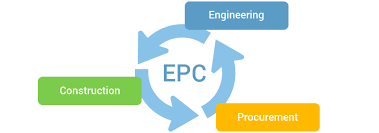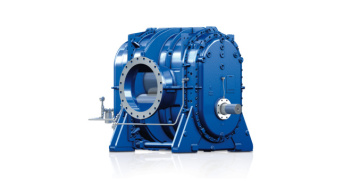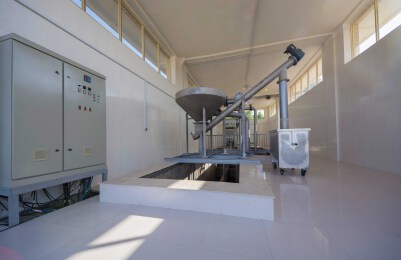:Our Services
EPC (stands for Engineering, Procurement and Construction) is one of the new types of contracts in which the contractor company (EPC contractor) is responsible for engineering, procurement and supply of all equipment and construction of the project. Gives. In this way, the contractor first prepares work packages in the "engineering phase" by developing a schedule, allocates materials and equipment in the "procurement phase" and in the "construction phase" carries out the project operations in accordance with them.
It should be added that in other types of contracts that were previously used in large construction and industrial projects, in addition to the employer and contractor agents, there was another agent called a consultant (a total of three factors) who was responsible for overseeing the implementation. Took charge of the project. In this case, due to the lack of overlap in the design and construction process by the contractor and consultant, and in some cases the need to modify the work during execution, causing a waste of time and overall costs of the project.
As a result, to eliminate this disruption, the need to eliminate the consulting agent and increase the utilization of the contractor's own power has increased, and in the EPC contract with two factors of the work process (employer-contractor), It works. In this way, the responsibility and risk of the employer is minimized and the time and costs of designing and constructing the project are significantly reduced.
Refinery Design


Investment
Build, operation and transfer (BOT) contract is a type of economic contract that is usually concluded between governments and organizations in charge of the economy on the one hand and private sector companies on the other. In this type of contract, the private sector company undertakes to make the necessary investment to carry out a project (usually large and infrastructure), then invest in it for a limited time in return, and finally complete it. Hand over the active to the other party (usually the government).
The build + operation + transfer contract is one of the newest financing contracts to enter the financial media since the early 1980s, when the Turkish government tendered the concession of several power plants. The use of this technique gradually developed, especially in the case of infrastructure. As this method is now very popular in developing countries. In this method, the construction and operation of the project for a certain period of time is done by a company called the project company, and the project is transferred to the employer after a certain period of time and after obtaining the necessary income.
It should be noted that the employer does not guarantee the repayment of any loan by investors or project managers, and since it is not a direct investment from the government budget, the pressure of borrowing is reduced, as well as the risks associated with construction and new technologies used. Transferred to the private sector. In addition to the above, the government or the employer also benefits from many private sector experiences both during the construction of the project and during the operation of the project by the private company. Thus, B.O.T is not an independent method of executive contracts but rather a method of financing a project. The growing popularity of this type of project is due to two reasons: 1- Lack of government capital 2- Thinking of better management by the private sector.


Finance Network
Sewage network is an infrastructure that transports sewage (both human and urban, etc.) and surface runoff through canals. Sewage network includes various components such as transmission pipes, manhole, pumping station and.. This network leads to wastewater treatment plants or sewage disposal.Urban wastewater production is one of the most important causes of environmental pollution, so its transfer to an environment outside the city and the place of production. Also, its treatment is considered a good solution to protect the environment.
Types of sewage networks
Sewerage networks can be categorized in several aspects, which we have briefly described below.
1- Separate and composite networks
2- Conventional and unconventional networks
A pump house is a building in which water pumps or other liquids and related equipment are housed. The pump house is built in a place where there is a need to transfer large volumes of water from one point to another.
Pumps are used to supply water to canals, drainage of low ground, take sewage to treatment plants, and so on.

Equipment Sales
Mehr Ab Tasfieh Company is known as one of the main sellers and importers of water and wastewater treatment equipment. The import of equipment has been from all reputable European companies and all steps from preparation to installation and support are the responsibility of the company. Here are some examples of imported equipment:
- Hyperclassic
- Blower
- Sludge removal device
- Diesel generator
-Decanter
And other equipment used in water and sewage facilities




Operation
Instructions for operation of the wastewater treatment plant or operation of the wastewater treatment package include all methods, instructions and tips that are used to repair, maintain, operate, operate and operate wastewater treatment systems.
Proper operation can increase the efficiency of water and wastewater treatment systems and on the other hand optimize operating costs.
Familiarity with the operation of different units of wastewater treatment plant for proper operation
Different wastewater treatment units are determined according to the type of wastewater entering the treatment plant, such as sanitary, hospital and industrial wastewater, and following that, the selected processes and methods for treatment. The greater the number and complexity of these units, the more specialized the operation of the wastewater treatment plant. Here are the most common ones:
Trash: Usually the first unit in a wastewater treatment plant.
Primary sedimentation: Used to remove suspended solids that may have gravitational sedimentation.
Degreasing: Used to remove fat and ranges from simple gravity degreasing to a variety of advanced processes such as DAF.
Balancer and sewage pumping station: It is used to balance and pump the incoming sewage to the treatment plant.
Aerated activated sludge: Aerated by surface or deep aeration of wastewater and provides growth conditions for aerobic microorganisms.
Biological sedimentation: In this unit, activated sludge is sedimented by gravity and separated from wastewater.
MBR membrane unit: In membrane processes, wastewater is treated by passing through a membrane or semi-permeable membrane. Operation of membrane treatment plants requires high expertise.
Disinfection: In this unit, wastewater is disinfected by various methods.
Pumping unit: In different parts of the treatment plant, for example, before pressurized filters are used to pump wastewater with a specific flow rate and pressure.
Filtration and membrane unit: Filtration can include sand filter, carbon filter, micro-filter and ultrafilter. Sand and carbon filters may be designed and operated by gravity or pressure. Membrane methods include RO reverse osmosis and NF nanofiltration methods.
Physical-chemical unit: In this process, adding chemicals to the wastewater and effluent causes coagulation, clotting and precipitation of wastewater contaminants and then these contaminants are deposited in the chemical sedimentation unit.











